Kids have their say about who should appear on our next bank note
In one of our Bank of Canada Museum lesson plans, we challenged students to “think like historians,” as they nominated Canadians they’d like to see on our next $5 bill.
Historically significant?
“Historical significance” is one of six concepts found in the Historical Thinking Project, a set of resources produced by education specialists Peter Seixas and Tom Morton. The project teaches a method of educating young students to think like historians—giving the kids a fishing rod instead of a fish when it comes to the study of history.
Students from across Canada recently explored the notion of historical significance using a lesson plan the Museum developed for grades 6 to 11: A Bank NOTE-able Canadian. The lesson complemented the public consultation the Bank of Canada organized in early 2020 to discover who Canadians felt should appear on the next $5 bill. Using the nomination criteria, the kids were asked to show us who they thought would best represent Canada on a new bank note.
But students also had to apply what they learned about historical significance and to think about their choices in a different way. This involves looking not simply at the person who is significant but also at the circumstances they create. So, when deciding someone’s significance, the young historians had to ask themselves a few questions:
- Did this person’s actions result in change?
- Can you draw a line from their actions to a series of significant events: simple cause and effect?
- Have their actions revealed something about the person’s context and era?
- Do the actions shed light on issues that concern us today?
Bank NOTE-able Canadians: the students’ choices
The Bank’s public call for nominations, the Next Bank NOTE-able Canadian, ended on March 11. There were nearly 45,000 nominations, resulting in over 600 qualifying individuals identified. It’s good to keep in mind that this was not a popularity contest but, rather, a process to gather from Canadians a broad selection of possible choices. No matter how few or how many times a person was nominated, each one will be given equal consideration. It’s a sort of crowd sourcing for candidates.
Teachers from six provinces and one territory followed our lesson plan mailed us nearly 200 examples of their students’ bank note designs. In total, 46 individuals were chosen by students to appear on the new $5 note. Just like the public consultation, the students’ choices resulted in multiple calls for some individuals. Terry Fox, Nellie McClung, Sir Isaac Brock, E. Pauline Johnson, Frederick Banting, Isapo-muxika (Crowfoot) and Tim Horton were all popular with the kids. But there were also some less familiar suggestions that we’d like to share. Some we even had to look up, such as the Montréal chemist who invented peanut butter: Marcellus Edson.
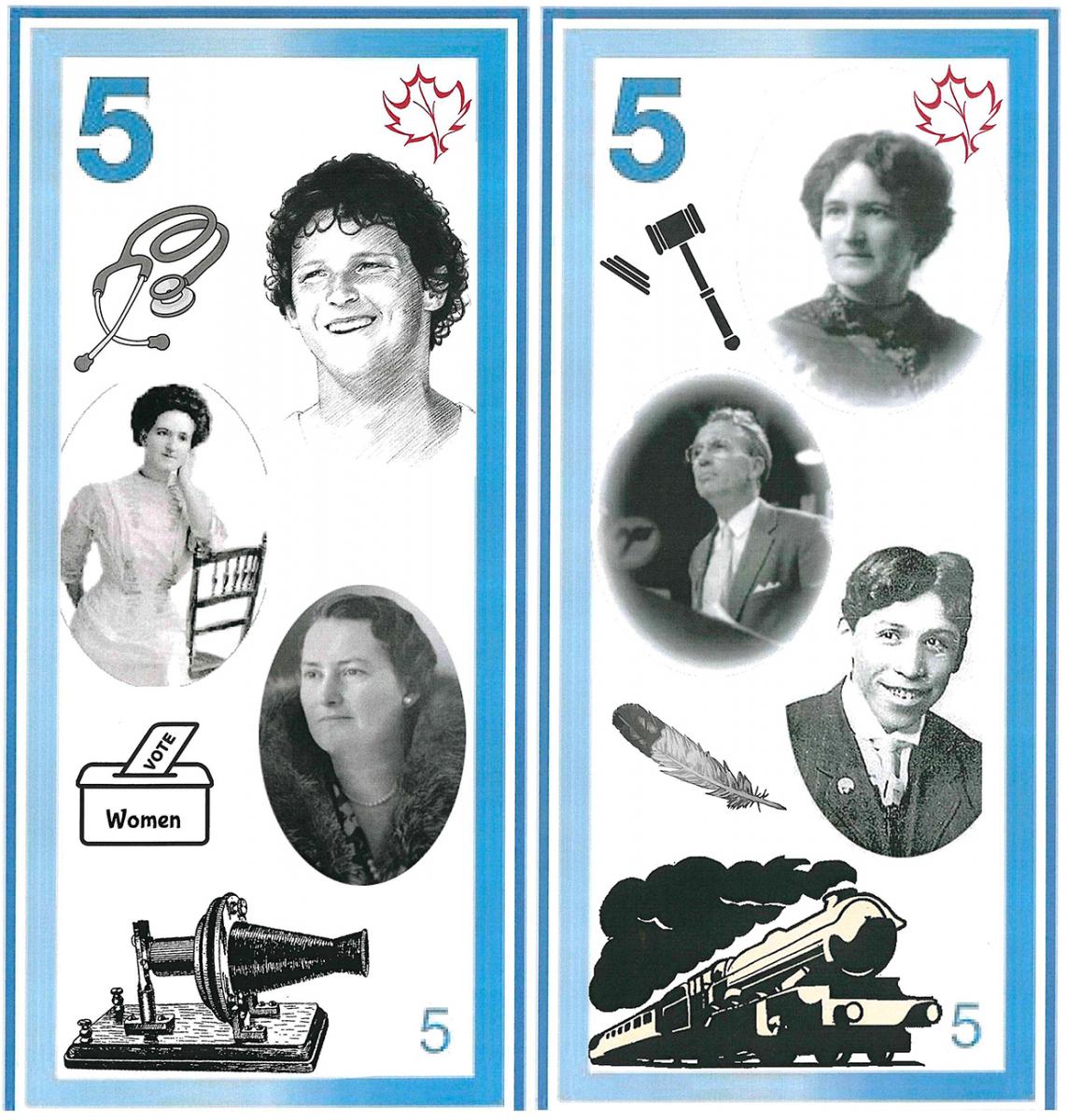
One student wasn’t taking any chances and nominated Terry Fox, Alexander Graham Bell, Elijah McCoy and the entire Famous Five for one very efficient bank note.
Violet King was not only the first African-Canadian to obtain a law degree in Alberta but also the first African-Canadian woman to become a lawyer in Canada.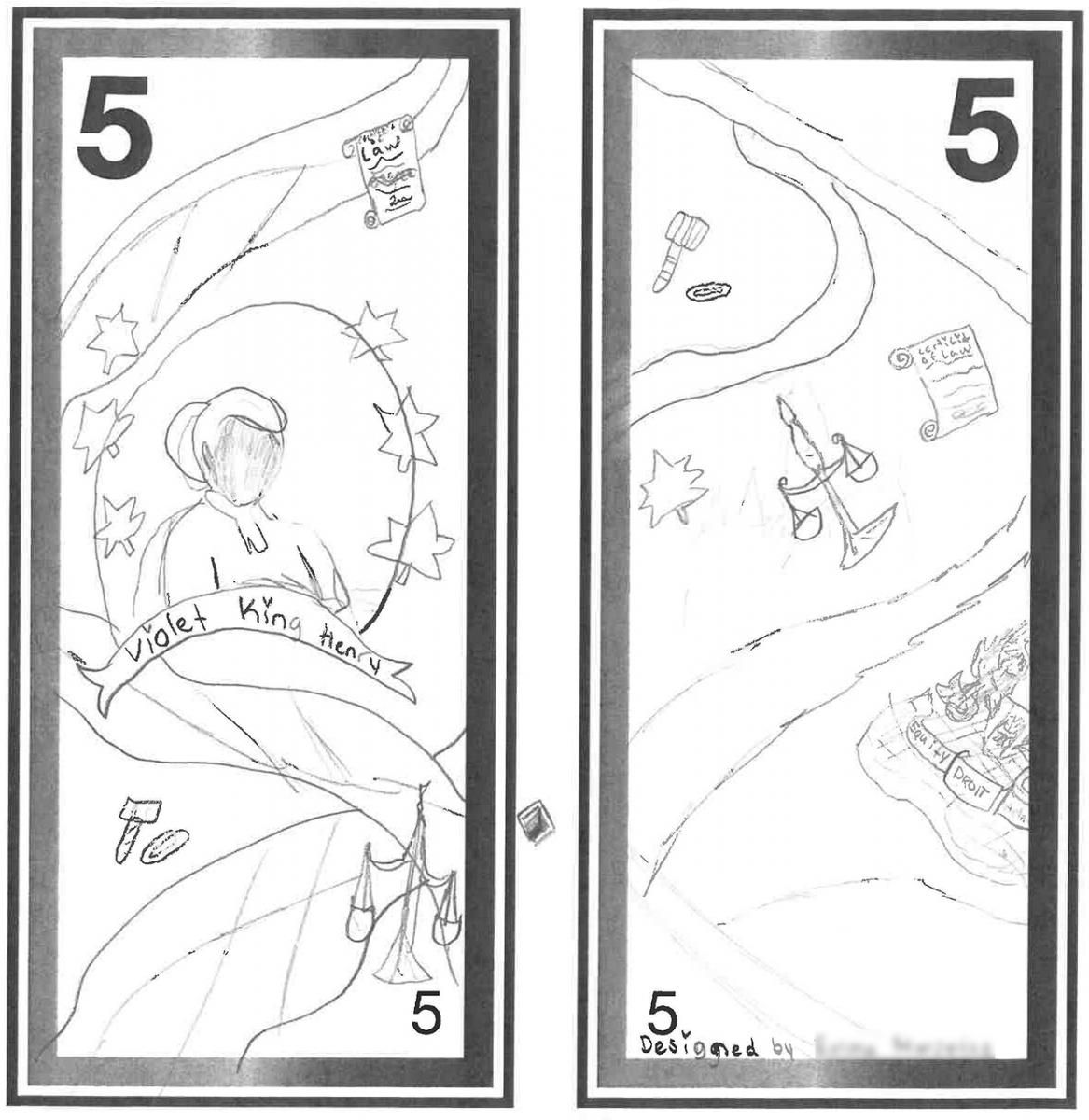
We chose Terrance Stanley Fox as a Canadian figure because he ran the Marathon of Hope and reached 5,373 km. […] Terry Fox and his journey have inspired us as students, athletes and children. He is a hero not only for Canada, but also for the whole world.
Grade 10, Prince Edward Island
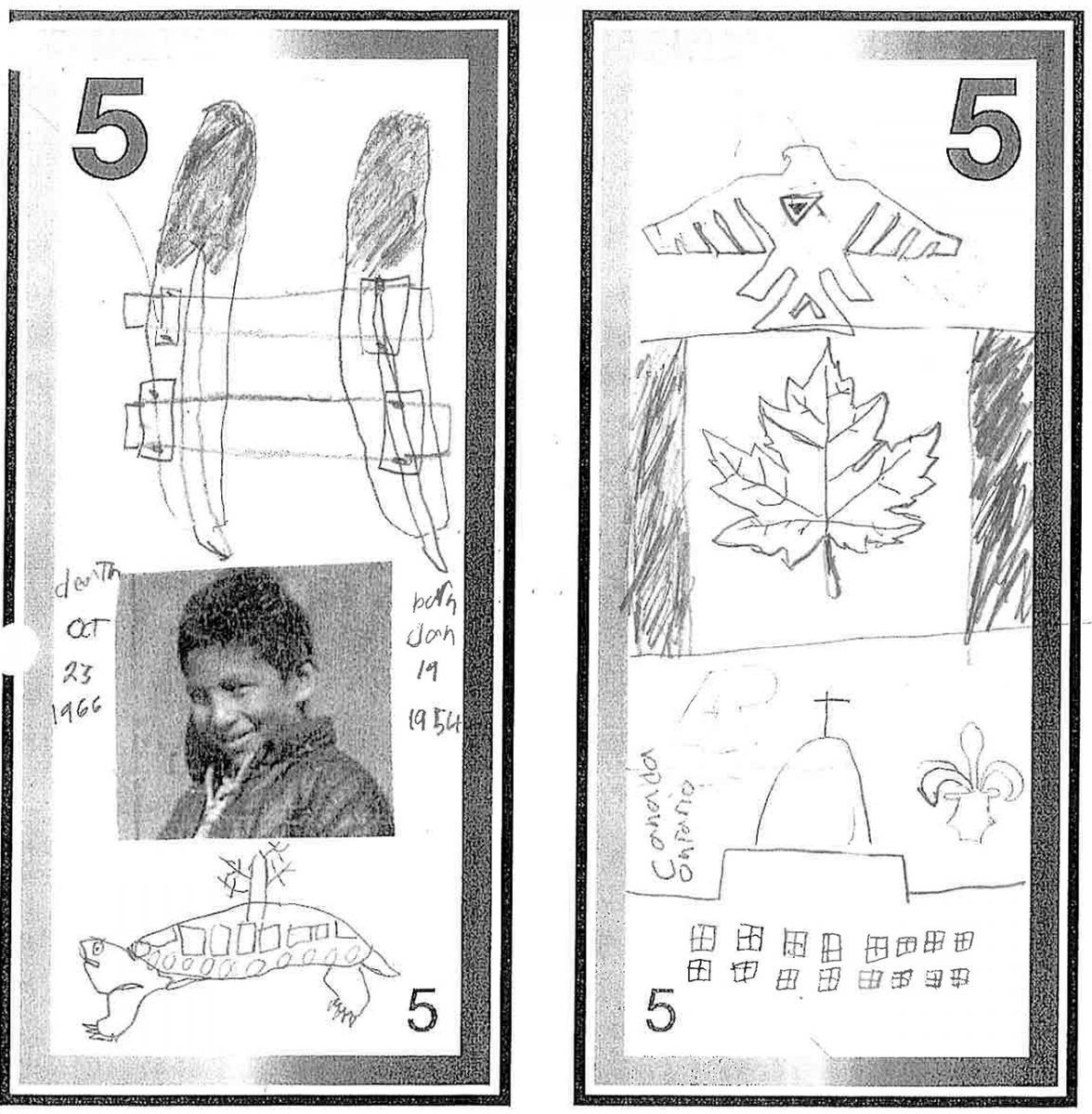
In 1966, Chanie Wenjack ran away from an Indian Residential School and died attempting to walk back to his home in the bush. His sad story would bring the plight of Indigenous children in residential schools to national attention.
Group of Seven artist Lawren S. Harris is shown here along with his work as it hangs in the McMichael Canadian Art Collection gallery in Kleinburg, Ontario. Yes, his hair was that big.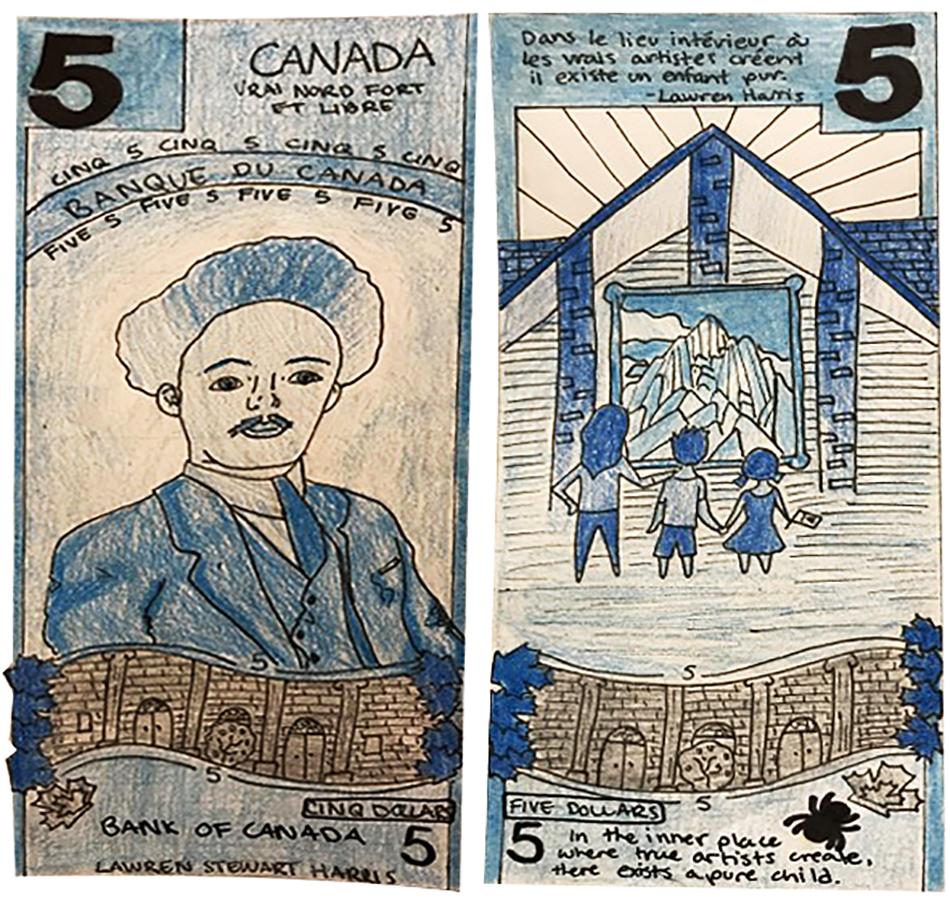
Angela Sidney was a Tagish woman from the Yukon. She was an author and fluent in three languages: English, Tagish and Tlingit. Her books were all about the Tagish culture—its traditions, songs and language—so these could be passed on to future generations. […] Her efforts to preserve her culture were even recognized by the Canadian government. She received the Order of Canada in 1985.
Secondaire 5 student, Quebec
Tom Longboat, the great Canadian long-distance runner, was from the Six Nations Reserve in Brantford, Ontario. He won the Boston Marathon in 1907 and was proclaimed the Professional Champion of the World in 1909.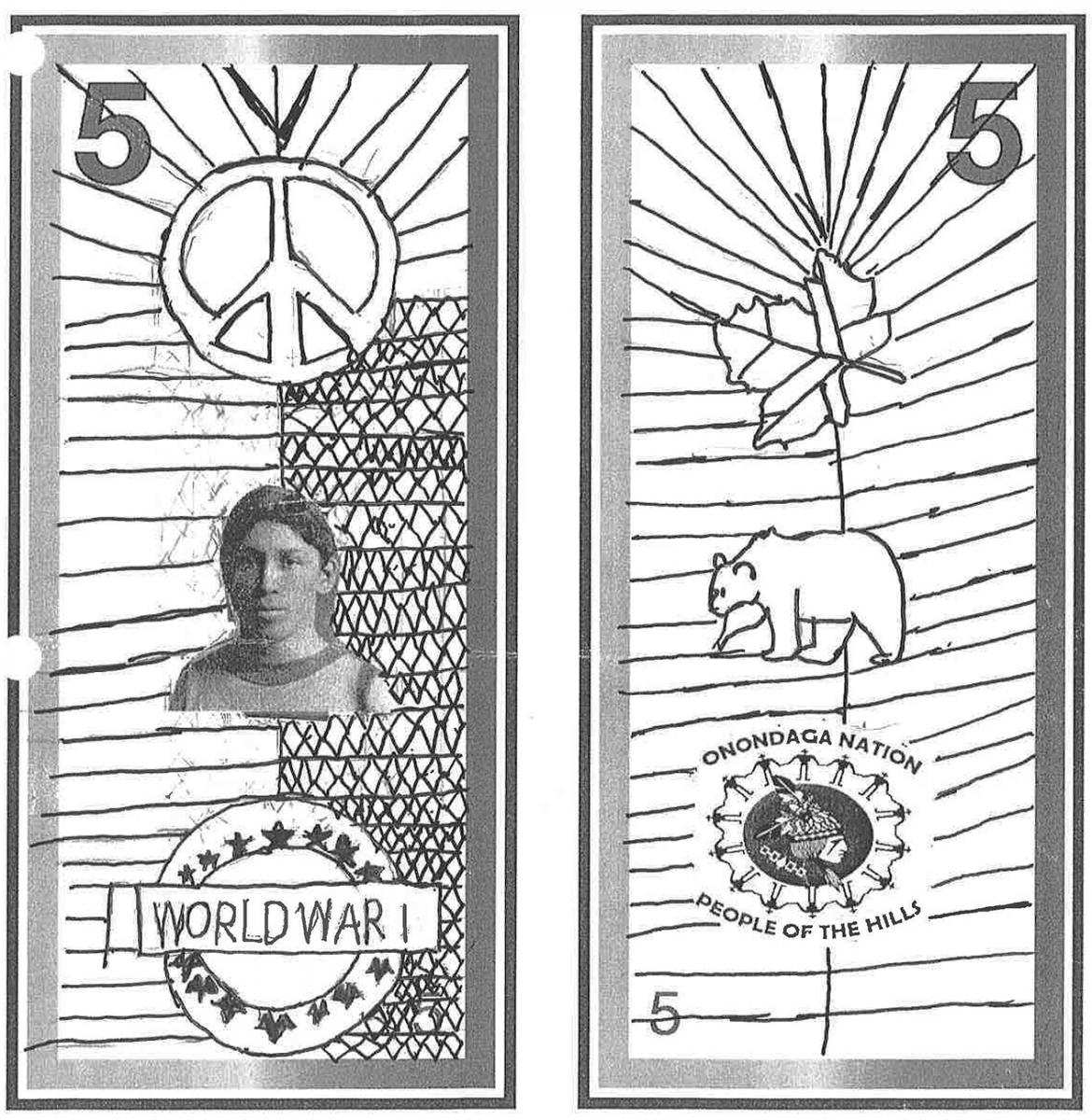
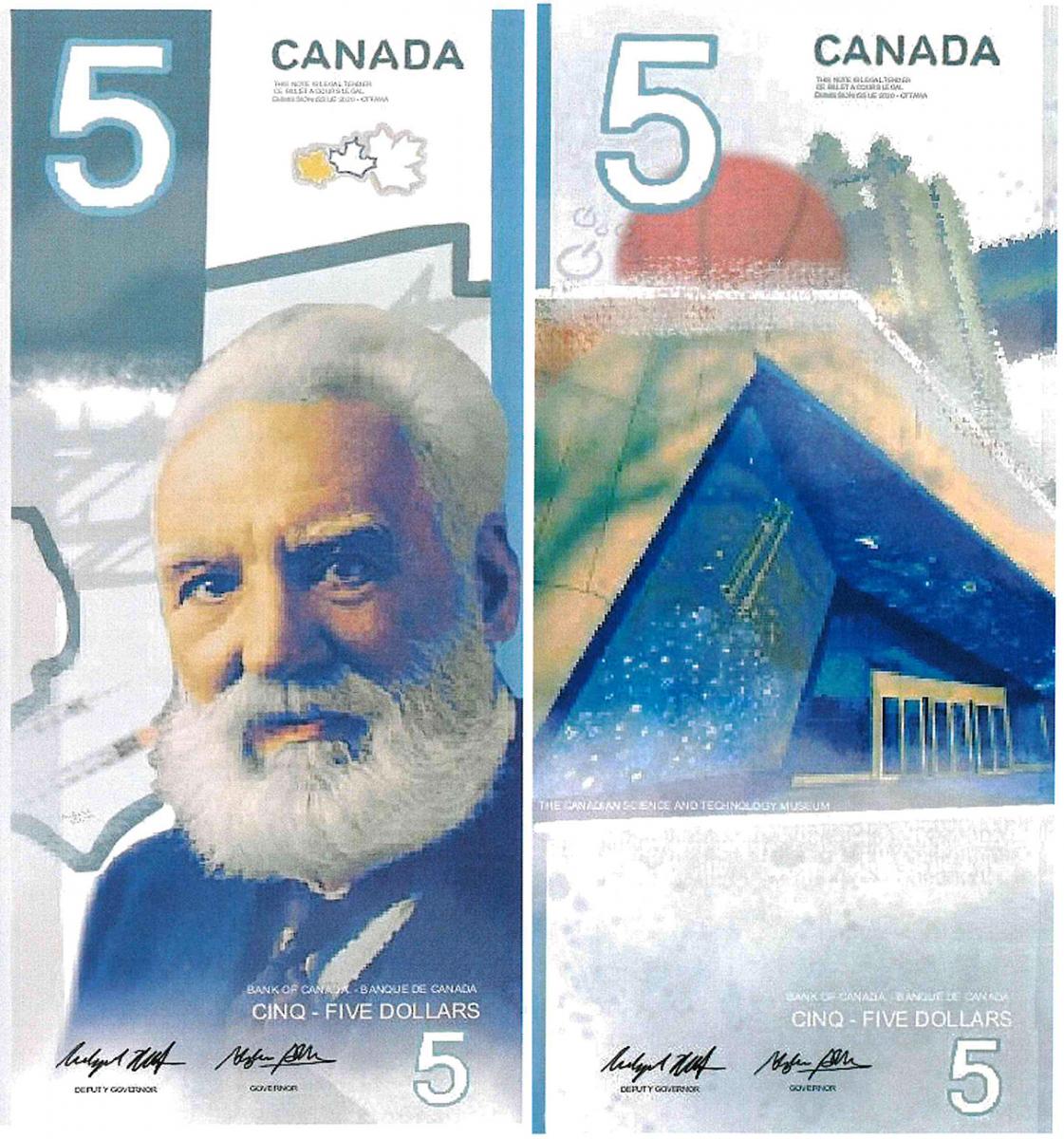
Alexander Graham Bell, the Canada Science and Technology Museum and a number of Canadian inventions adorn this extremely professional-looking note.
On April 9th 1917, Thain Wendel MacDowell, with two other runners, came to a German position before the rest of his company arrived at the battle of Vimy Ridge [ …] Later on, he received the Victorian Cross and the Distinguished Service Order: two of the military’s highest awards. So, I decided to choose Thain as the main person on the front of the bill.
Grade 7 student, Alberta
Shawnadithit was the last Beothuk, Newfoundland’s Indigenous people, when she died in 1829. Nahnebahwequay was an outspoken and articulate advocate for Indigenous peoples’ rights during the mid-19th century.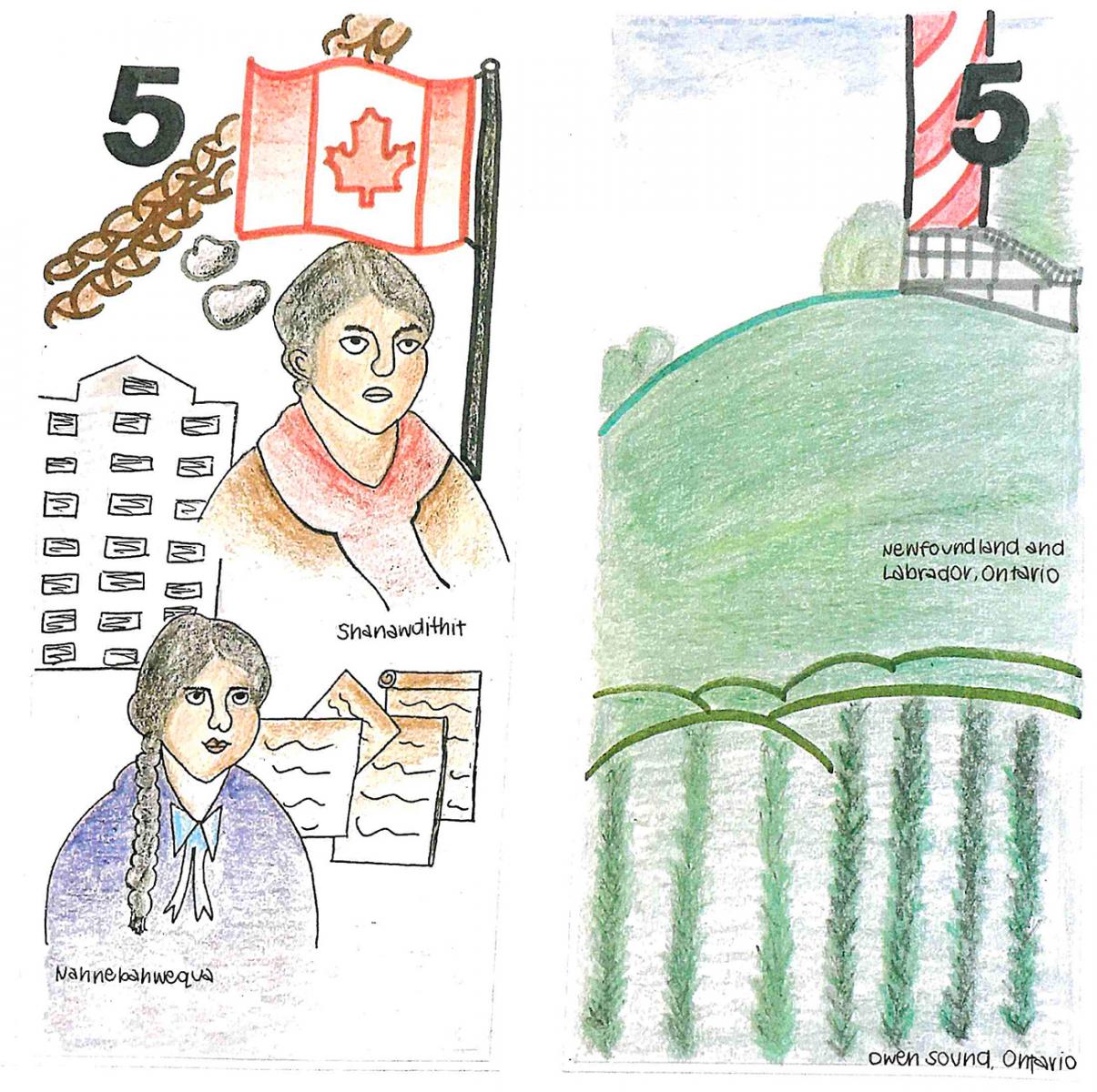
In 1917, telegraph operator Vincent Coleman alerted the railways of an impending explosion in Halifax Harbour. A passenger train was halted, and the outside world was warned of the disaster moments before the train station and Coleman were obliterated.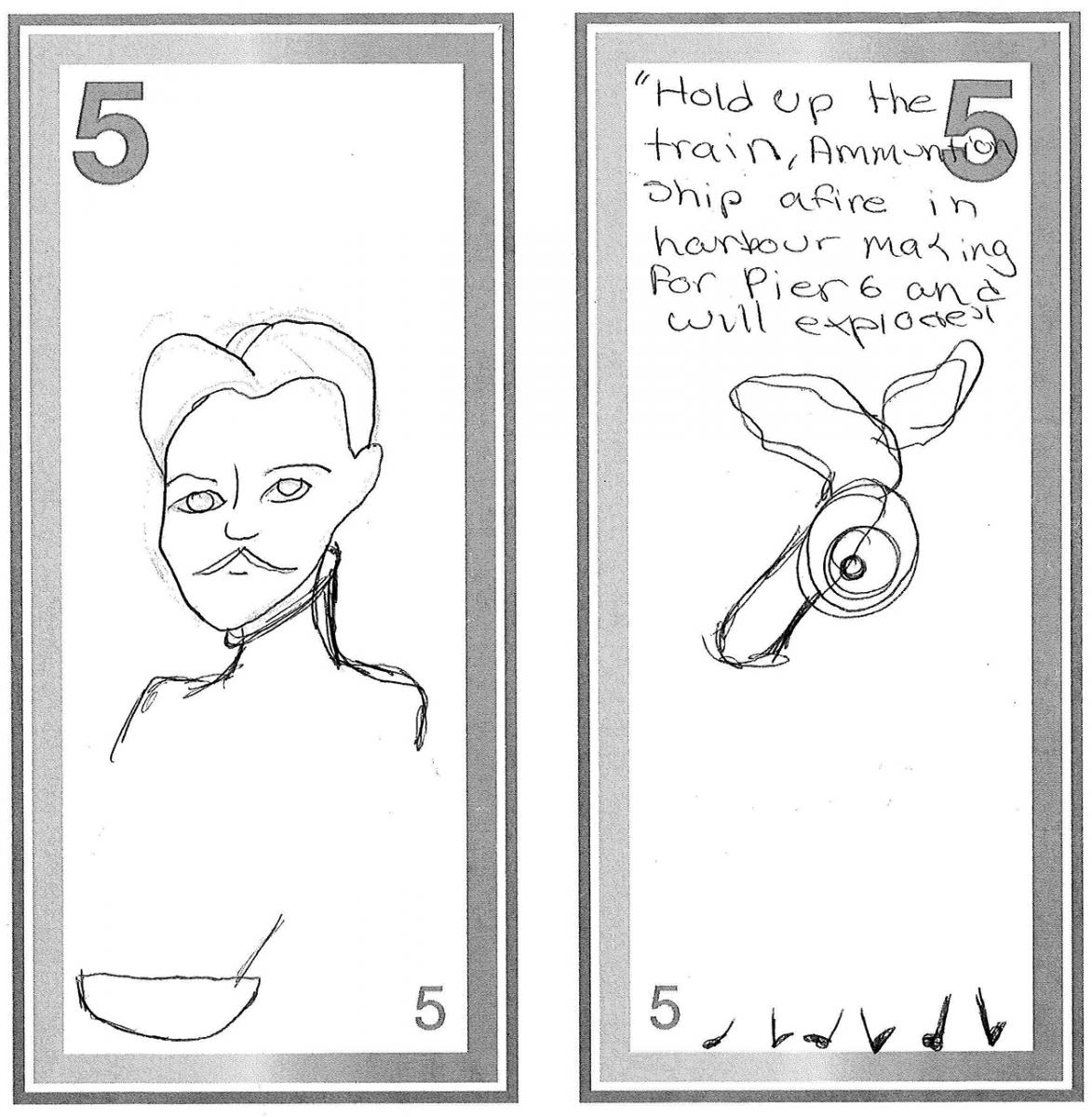
The next steps for our new bank NOTE-able Canadian
As for the results of the public consultation, all eligible nominees will be reviewed by an independent advisory council. This council will take into account historical and public opinion research and develop a short list of candidates. Please visit the Bank’s website for a more in-depth look at both the process and the results.
The Museum Blog
Teaching art with currency
By: Adam Young
New Acquisitions—2022 Edition
Money: it’s a question of trust
By: Graham Iddon
The day Winnipeg was invaded
By: David Bergeron
Positive notes
By: Krista Broeckx









